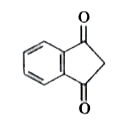Which of the following acid will release maximum amount of heat when completely neutralised by strong base NaOH?
1MHCI
1MHNO3
1MHCIO4
1MH2SO4
To determine which acid will release the maximum amount of heat when completely neutralized by a strong base (NaOH), we can follow these steps:
1. Understanding Neutralization: Neutralization is a reaction between an acid and a base that produces water and a salt. The general reaction can be represented as:
Acid+Base→Salt+Water+Heat
The amount of heat released during this reaction is related to the number of hydrogen ions (H⁺) that the acid can provide.
2. Identify the Acids: We need to consider the acids provided in the question. Let's assume the acids are:
- HCl (Hydrochloric acid)
- HNO₃ (Nitric acid)
- HClO₄ (Perchloric acid)
- H₂SO₄ (Sulfuric acid)
3. Dissociation of Acids: We will analyze how many H⁺ ions each acid releases when fully dissociated:
- HCl: Dissociates to give 1 H⁺ ion.
HCl→H++Cl−
- HNO₃: Dissociates to give 1 H⁺ ion.
HNO3→H++NO−3
- HClO₄: Dissociates to give 1 H⁺ ion.
HClO4→H++ClO−4
- H₂SO₄: Dissociates to give 2 H⁺ ions (first dissociation is strong, second is weak).
H2SO4→2H++SO2−4
4. Comparing H⁺ Ion Production: From the dissociation:
- HCl: 1 H⁺
- HNO₃: 1 H⁺
- HClO₄: 1 H⁺
- H₂SO₄: 2 H⁺
H₂SO₄ produces the most H⁺ ions (2 H⁺ ions).
5. Conclusion: Since H₂SO₄ releases the maximum number of H⁺ ions, it will release the maximum amount of heat when completely neutralized by NaOH.
Final Answer:
The acid that will release the maximum amount of heat when completely neutralized by NaOH is 1 molar H₂SO₄.
---
Acid+Base→Salt+Water+Heat
The amount of heat released during this reaction is related to the number of hydrogen ions (H⁺) that the acid can provide.
- HCl (Hydrochloric acid)
- HNO₃ (Nitric acid)
- HClO₄ (Perchloric acid)
- H₂SO₄ (Sulfuric acid)
- HCl: Dissociates to give 1 H⁺ ion.
HCl→H++Cl−
- HNO₃: Dissociates to give 1 H⁺ ion.
HNO3→H++NO−3
- HClO₄: Dissociates to give 1 H⁺ ion.
HClO4→H++ClO−4
- H₂SO₄: Dissociates to give 2 H⁺ ions (first dissociation is strong, second is weak).
H2SO4→2H++SO2−4
- HCl: 1 H⁺
- HNO₃: 1 H⁺
- HClO₄: 1 H⁺
- H₂SO₄: 2 H⁺
The acid that will release the maximum amount of heat when completely neutralized by NaOH is 1 molar H₂SO₄.
Topper's Solved these Questions
- THERMODYNAMICSBook:CENGAGE CHEMISTRY ENGLISHChapter:THERMODYNAMICSExercise:Exercise
Explore 1 Video
- THERMODYNAMICSBook:CENGAGE CHEMISTRY ENGLISHChapter:THERMODYNAMICSExercise:Ex 6.1
Explore 26 Videos
- STOICHIOMETRYBook:CENGAGE CHEMISTRY ENGLISHChapter:STOICHIOMETRYExercise:Archives Subjective
Explore 33 Videos
Similar Questions
Knowledge Check
Which metal catalyzed reaction would release the maximum amount of heat per CH2 unit ?
Acyclopropane +H2→ propaneBcyclobutane +H2→ butaneCcyclopentane +H2→ pentaneDcyclohexane +H2→ hexaneWhich of the following compounds exhibit acid base reaction with NaOH?
A B
B C
C D
D
Which of the following is strong Lewis base?
View SolutionIn which of the following maximum amount of heat is released if one mole of each reactant is taken?
View SolutionWhich of the following alkenes does not undergo rearrangement on heating with a strong acid?
View SolutionWhich of the following alkenes does not undergo rearrangement on heating with a strong acid?
View SolutionConductance measurements and be used to detect the end point of acid-base titrations. Which of the following plots correctly represents the end point of the titration of strong acid and a strong base?
View SolutionWhich of the following acid will form an (a) Anhydride on heating and
(b) Acid amide on strong heating with ammonia?
View Solution